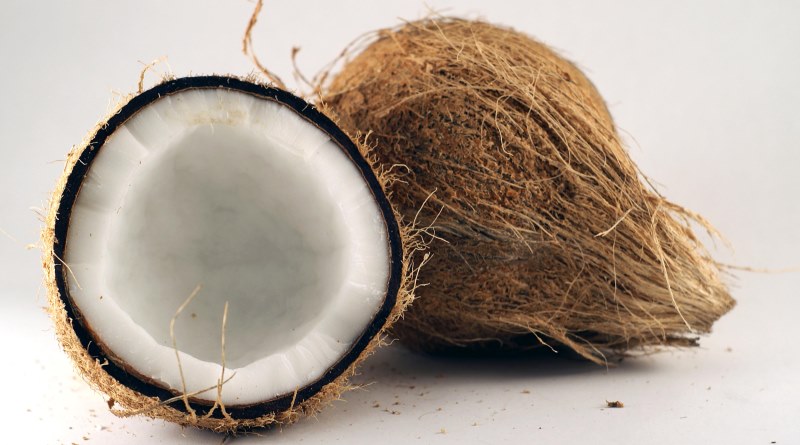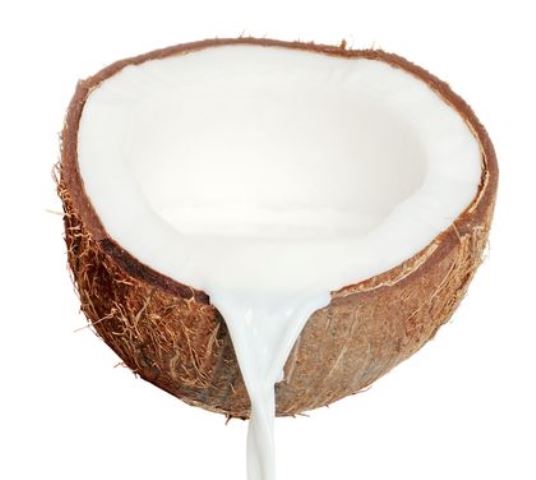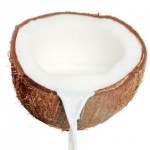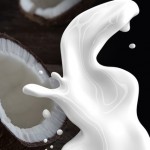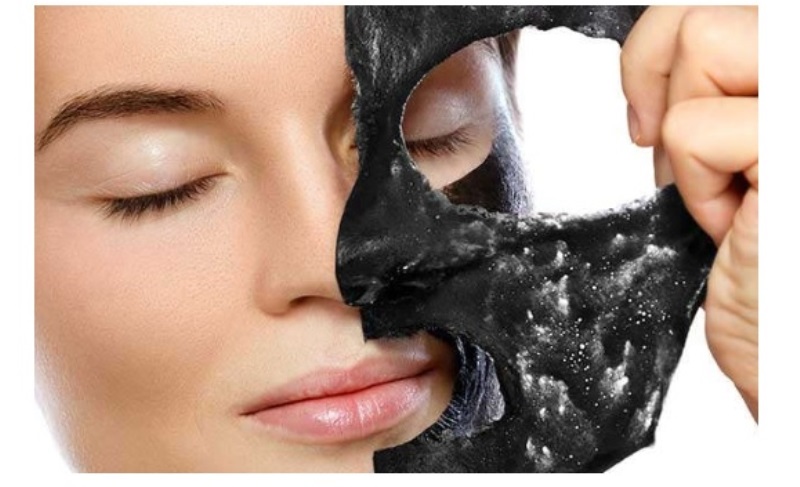Coconut milk is a natural and homemade product that is not only easy to make, but is also very beneficial for our skin, hair, and overall health. Making it is also fairly easy once you understand the process of extracting coconut milk from coconut. Here are the various uses of coconut milk and how you can reap its benefits:
Making coconut milk is not a very complicated process. Once you are finished, you are left with three different kinds of extracts. Two extracts are used at the beginning of cooking curries and payasams, and one is used at the end because it is much thicker.
Image source: Google, copyright-free image under Creative Commons License
To make coconut milk, take a mature coconut, crack it open, and collect the water in a glass. Then, collect the grating of the coconut and put it in a blender. Add a cup of water to the grating and then blend it perfectly until it is a fine paste. Then place a strainer on a pan or a bowl and then pour out the coconut paste – this process will automatically strain the coconut milk. To get the maximum amount of coconut milk from the coconut shreds, press a spoon on them to check if all the milk has been strained. This process renders the first extract of coconut milk. Now, put the shreds of coconut in the blender along with some water and then blend it again. Strain the mixture the same way you did earlier to get the second extract of coconut milk. If you repeat the process again, you will also have the third extract.
Suggested read: 12 amazing tips on how to strengthen your hair
There are many benefits of coconut milk. Coconuts have a great deal of vitamins E, C, B3, B1, B5 and B6, fiber, iron, sodium, selenium, calcium, phosphorous, magnesium and so on. While cow’s milk has lactose, coconut milk does not have lactose, making it possible for more people to consume. Vegetarians can also use coconut milk to make milkshakes or smoothies. Coconuts contain saturated fat, which helps protect us from viruses and various infections.
Coconut milk is a popular ingredient found in many skincare products. Here are some of the benefits of coconut milk for your skin:
1. Facial cleanser with coconut milk
Image source: Shutterstock
The next time you run out of cleanser, use coconut milk as an alternative. To make this homemade face cleanser, mix one teaspoon of yogurt along with some drops of coconut milk and then apply this mixture evenly all over your face. After about 5 minutes, take a wet cotton cloth and wipe the mask off your face, then splash some cold water on your face to fully cleanse everything.
2. Coconut milk as makeup remover
You should definitely try removing your makeup with coconut milk if you are looking for a more natural makeup removal solution. To make this natural makeup remedy, just add two drops of olive oil to a tablespoon of coconut milk and then use this concoction to remove your makeup. This works especially well to remove stubborn eye makeup. Moreover, this natural makeup remover will also make your face very clear and soft.
3. Face pack with coconut milk
Image source: Google, copyright-free image under Creative Commons License
A face pack with coconut milk will help make your skin bright and supple. To make this amazing face pack, just add a few pinches of sandalwood powder, a bit of saffron powder, and a bit of honey to some coconut milk. Apply the pack on your face and let it dry. After about 15 minutes, wash it off with lukewarm water.
4. Coconut milk to prevent wrinkles
You can also use coconut milk to make a cream that prevents wrinkles from appearing on your face. To make this cream, just soak a few almonds in some water overnight. In the morning, peel the skin off the almonds then grind them into a smooth paste. Next, take some Vitamin E oil and add it to the almond paste. Then mix some thick coconut oil to this mixture and blend the whole thing. With regular usage of this cream, you will find your skin gradually becoming tighter and wrinkle-free. This cream will also help to remove all the fine lines from your face. Every night after cleansing your face, apply this cream all over your face and wash it off when you wake up in the morning to discover its magical effect.
There are a number of benefits of coconut milk for your hair. Its nutrients are perfectly preserved when stored in the milky form and used on your hair and scalp.
1. Coconut milk prevents hair loss
Image source: Google, copyright-free image under Creative Commons License
If you are suffering from severe hair loss, then the solution lies in coconut milk. Just mix coconut milk with some camphor and a little water. Then massage this solution on your scalp, focusing on the balding spots. Leave this mixture on your head for a few hours and then wash your hair with some warm water and then wrap your hair with a towel, letting it absorb the extra mixture. Not only does this procedure prevent hair fall, but it also treats all the bald spots on your scalp.
2. To moisturize your hair
If you are looking for hair products that keep your hair healthy and shiny, then apply coconut milk twenty minutes before washing your hair.
Suggested read: 12 best home remedies for dry, cracked, and chapped hands
3. As a hair conditioner
Take a few drops of coconut milk in your palm and rub it all over your hair after you have washed it. For best results, bend forward and let your hair hang towards the floor while you apply the coconut milk. This will work as a great leave-in conditioner.
4. Remedy for dry scalp
Image source: Google, copyright-free image under Creative Commons License
Not only does coconut milk improve the health of your hair, but it can also cure your scalp if it is dry. Take two cups of warm coconut milk and massage it on your scalp. Wash your hair after about an hour, once it has fully soaked into your hair. Follow this at least once a week for best results.
These are some of the many ways you can use coconut milk in your daily life to improve the state of your skin, hair, and your overall health. The process of making coconut milk mentioned here is also really easy and simple, so start today!
Featured image source: Google, copyright-free image under Creative Commons License
